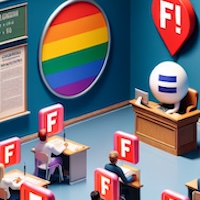While not every story of Twitter tries to untangle the mini-entrepreneurial soap opera that gave rise to Twitter, no story would be complete without a talk about the low hanging fruit of topics, Twitter’s lack of revenue. From one of its founders who once lamented about raising too much money at a previous one, Twitter has secured north of $155 million on route to a $1 billion valuation and rising, all of this without having to make a cent. Better even, I would suspect that earning money is not even a top three priority for the company in the next six months. Like the 140 character limit imposed on the messages, the challenge with monetizing Twitter comes from its equally abstract being. What is it really? Initially, it seemed like a bunch of noise, people signing up and announcing details of their lives to an audience that couldn’t keep up or didn’t care, unless it was a mom or jilted ex. All it took, though were a few unanticipated successes to validate the services existence and create one of many inflection points. Sometimes the signal in that noise was very powerful, because it was immediate, real-time, and distributed. Twitter has broken stories and helped at least one person avoid lengthy jail time overseas. This version of Twitter, which still contains much chatter about details better left un-tweeted along with a painful system for following conversations among others, has become something though which always has value – a distribution platform.
The numbers put up by Twitter users are in and of themselves astounding. The growth from 1.6 billion tweets total to 5 billion happened in less than a year. But, the totals are only a part of the story. A big part of the story is what contributes to those numbers, the adoption. It isn’t just the number of users, itself that’s astounding, it’s how pervasive Twitter is. Go to almost any blog, and you will see an option to Tweet their post. Watch ESPN or CNN, and you see constant mention of making sure to follow them on Twitter. Not to mention how Twitter has either replaced blogs as the personal homepage / website for countless people or become the personal homepage for people. If a celebrity isn’t already using Twitter, they are coming on board at a rapid clip. Ashton Kutcher has the most followers. He was the first to break one million (or one of the first) but now, just months later has almost four million. If we stumble upon this post a year from now, four million will seem minuscule. You won’t even crack the Top 100 with one million. You’re lucky to make it in the Top 200. This growth is what matters. It pains me to say it, but fueling the fire of adoption such that brands can’t live without it is the top priority. And, because it was at least based on the mobile phone, you can use Twitter from just about anywhere and anytime. Most importantly, almost everyone can do it. And, it has a network effect.
That Twitter hasn’t rolled out a formal revenue plan hasn’t stopped others from trying to make money from Twitter. And more than a few are succeeding. And, the one model that caught our eye thanks to Shoemoney’s unavoidably catchy headline, "How to Make $15,000 in One Month Just By Tweeting" is not surprisingly an ad based approach. This is not the first post by Shoe regarding Ad.ly, a company of which he speaks very highly. For those not familiar, it’s the unofficial younger brother to PayPerPost, the younger brother that got all the looks, all the attention, and has eclipsed its much harder working older brother. Both operate on a platform model, i.e., an interface approach, where publishers get to choose the topic and receive compensation for doing so. And, while there probably isn’t a rivalry between the two, thinking about the differences would make me mad if I were PayPerPost. Bloggers get paid less per post, and they have to write it. Ad.ly tweeters don’t just get paid more, but they just copy and paste. In his wonderful transparent way, Shoe shows screenshots (say that five times fast) of his account, where we see past earnings as well as upcoming campaigns, including several where he will receive almost $5,000 for a single 140 character message. It makes the $400 or so that Shoe receives from Sponsored Tweets (also mentioned in that post) seem almost under priced.
One thing is for sure. The Ad.ly folks are geniuses – from the positioning, "In Stream Advertising", to more importantly, their sales force. Shoemoney is but one of many publishers, many of whom are much, much larger – including celebrity/brands. This means a given campaign could easily cost them $50k. Is it worth it? Looking at the economics as shown from Shoemoney’s Sponsored Tweets interface, we can see that while $400 for 70,000 seems like a lot (almost $60cpm), the metrics can work out surprisingly well. Not all campaigns do this well, but two hit a $.06 effective cost per click. Not bad. Multiplied by 10 for the $4000, it means an effective CPC of $.60 on a really good campaign. Not that I think it means CPA advertisers should start hitting up these companies. That’s the Catch-22 of these businesses allowing the Tweeters to choose approve. But, if this is sounding familiar, it’s probably because it seems a lot like email. High rates, high responsiveness, supreme consolidation of inventory and ad dollars.
Is this the revenue model, i.e., creating a marketplace for users and advertisers? Is Twitter perhaps really just looking to see what others do, and they will just either buy them or open up their own version? We look at Google and Facebook. There is always some notion of sponsored message that leverages the data flowingthrough their system – keywords/context for Google, user demographics for Facebook – monetized through a self-service platform with some hand holding for the larger spenders. Ask Gary Vaynerchuk whose own success with Twitter and Facebook helped him launch a super high priced consulting firm for businesses trying to figure out social media. Twitter can, like Google did early on, easily start just by focusing on getting businesses comfortable / successful before figuring out the broader approach. And, it could easily do the social media of helping users get more followers, and creating a market for cost per follows. If it means getting paid even $400 per tweet, who wouldn’t spend $.10 a follower?
 Network
Network

